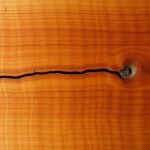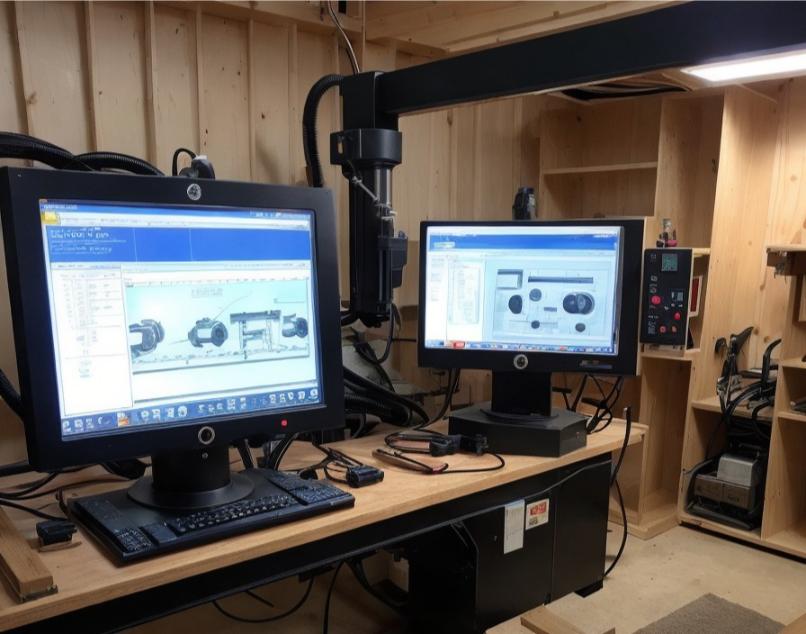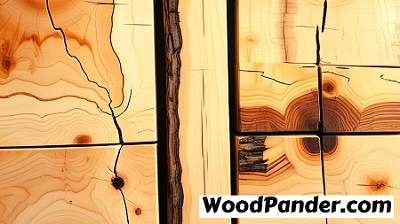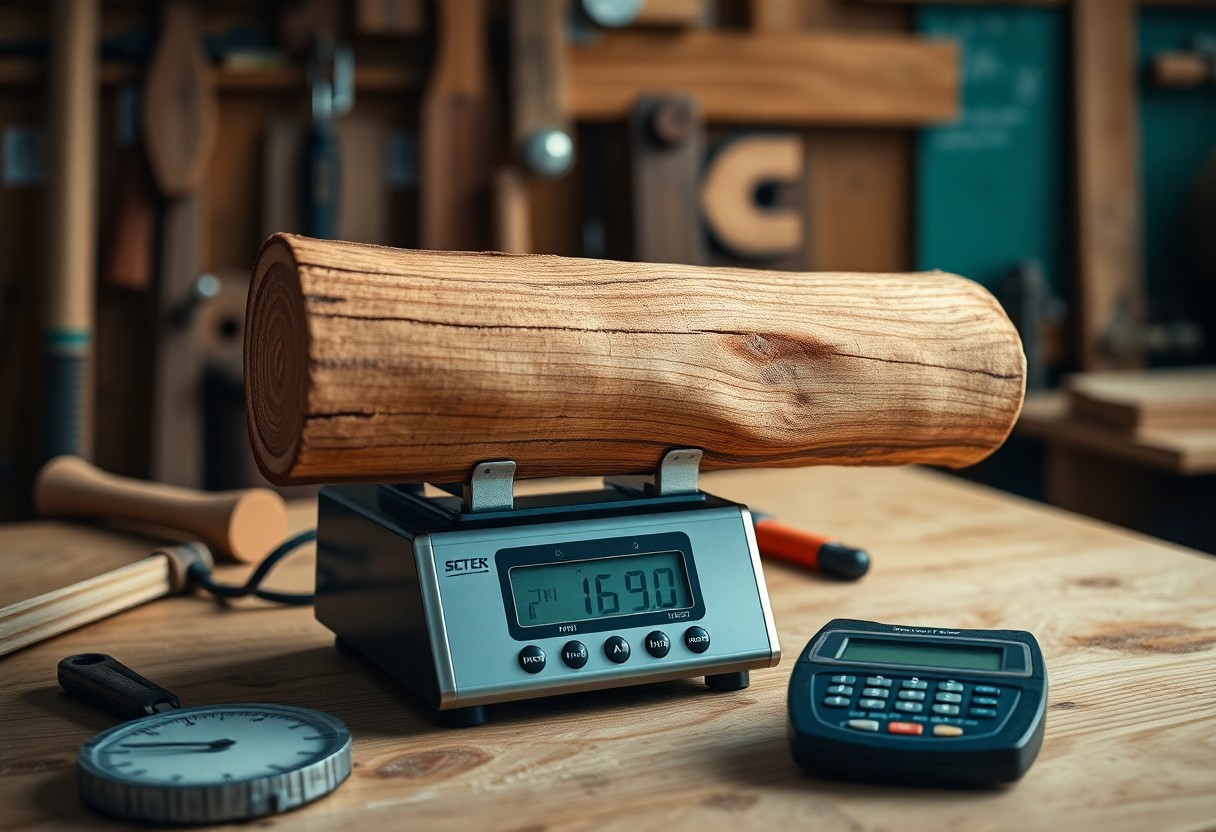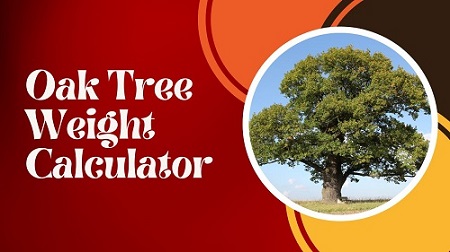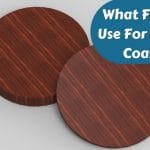As you venture into woodworking or explore the vast expanse of the natural world, you may find yourself drawn to the distinctive charm of hemlock wood.
To unlock the secrets of this versatile and valuable resource, you must first learn to identify it. By developing a keen eye for its unique characteristics – from the pale, straight-grained lumber to the delicate arrangement of its needles – you’ll not only enhance your appreciation for this remarkable tree but also ensure that you’re working with the right material for your project.
In this guide, we’ll explore into the key traits that set hemlock wood apart, providing you with a comprehensive foundation for accurate identification.
Importance of Identifying Hemlock Wood
The importance of correctly identifying hemlock wood cannot be overstated. For environmental conservationists, distinguishing hemlock is vital in tracking and preserving the species, which plays a significant role in maintaining biodiversity within its native ecosystems.
Ecological Significance of Hemlock Trees
Between the canopies of mature hemlocks, a delicate balance of life thrives. The trees provide shelter and food for a variety of animals, including deer, elk, birds, and small mammals, making them a keystone species in their ecosystems.
Distinguishing Hemlock from Similar Species
Before you can appreciate the unique characteristics of hemlock wood, you must first be able to distinguish it from similar species.
Misidentification can lead to improper use, compromised structural integrity, or unexpected aesthetic outcomes in finished products.
Wood enthusiasts and craftsmen alike rely on accurate identification to unlock the full potential of hemlock wood. By understanding the distinct features of hemlock, you can ensure that your projects benefit from its rot resistance, workability, and aesthetic appeal.
In the world of woodworking, knowledge of hemlock’s unique properties is the key to unlocking exceptional craftsmanship.
Physical Characteristics of Hemlock Wood
Some of the most distinctive features of hemlock wood can be observed through its physical characteristics. These traits are important in identifying the wood and understanding its properties.
Tree Size and Shape
Characteristics of hemlock trees include a slender shape, with mature trees typically reaching heights between 50 to 70 feet. The trunk diameter usually ranges from 1 to 2 feet, with a straight, columnar shape.
Trunk Diameter and Branching Pattern
An examination of the trunk diameter and branching pattern reveals a unique arrangement. Hemlock trees tend to have a narrow, tapering trunk with a conical crown, featuring horizontal or slightly drooping branches.
Understanding the trunk diameter and branching pattern is vital in identifying hemlock wood. The narrow trunk and conical crown contribute to the tree’s overall shape, which is often described as slender and elegant.
This shape allows hemlock trees to thrive in dense forests, where competition for light and space is intense.
The horizontal or slightly drooping branches also play a crucial role in the tree’s ability to adapt to its environment, providing shade and shelter for the understory.
Grain Pattern and Texture of Hemlock Wood
Your ability to identify hemlock wood relies heavily on recognizing its distinct grain pattern and texture. These characteristics are vital in distinguishing hemlock from other coniferous species.
Wood Grain Characteristics
After a closer inspection, you’ll notice that hemlock wood features a consistently straight grain, rarely deviating with irregular patterns. This uniform growth pattern is a testament to the tree’s natural development, resulting in a visually appealing and workable wood.
Texture and Workability
At first glance, the texture of hemlock wood appears fine and even, lacking the roughness found in some other softwoods. This seamless texture not only enhances the wood’s natural beauty but also makes sanding and finishing a more straightforward process.
This fine texture, combined with the wood’s moderate softness, contributes to its ease of use in woodworking projects.
Hemlock wood can be shaped with precision, making it an ideal choice for applications where detail and craftsmanship are paramount.
Furthermore, its natural luster adds a subtle sheen to finished pieces without the need for excessive staining or varnishing, allowing the wood’s inherent beauty to shine through.

Bark Features of Hemlock Wood
Once again, attention to detail is key when identifying hemlock wood. The bark of the hemlock tree is another distinctive feature critical to its identification.
Bark Color and Pattern
Along the trunk of the hemlock tree, you’ll notice the bark’s color and pattern change with age. In younger trees, the bark is generally smooth and a light grayish-brown that darkens and becomes deeply furrowed with age.
Bark Texture and Peel
Below the surface, the bark’s texture and peel provide further clues. Mature hemlock trees exhibit reddish-brown bark with thick ridges and deep, irregular fissures running vertically along the trunk.
With the bark’s flaky texture, it’s not uncommon to see remnants of it on the edges of sawn wood, providing immediate insights into the type of wood being examined. This characteristic, combined with the bark’s color and pattern, sets hemlock apart from other coniferous species.
10 Methods How to Identify Hemlock Wood
To accurately identify hemlock wood, you’ll need to examine various characteristics of the tree and its lumber. Here are 10 methods to help you do so:
1. Needle Arrangement and Structure
For a start, take a closer look at the needle arrangement and structure of the hemlock tree. You’ll notice that the needles are flat, linear, and individually attached to the branches, contributing to the tree’s feathery appearance.
2. Needle Color and Size
On closer inspection, you’ll see that hemlock needles are typically dark green to yellowish-green, with a relatively shorter length compared to other coniferous species.
Needle color and size can vary depending on the health of the tree, but they usually have a flat shape with a rounded tip and smooth edges.
3. Cones and Seeds
About the cones and seeds: hemlock cones are small and egg-shaped, typically measuring between 0.5 to 1 inch in length, with thin, flexible scales and a unique bract extending beyond the scale.
Even the seeds are small and winged, with a length of about 0.1 inch. The cones and seeds provide valuable insights into the age of hemlock trees and their reproductive cycle.
4. Bark Characteristics
Color the bark characteristics in your mind: young hemlocks feature smooth, gray bark, while older trees develop furrowed, scaly bark. Analyzing the bark’s texture, color, and pattern can provide vital clues in distinguishing hemlock from other conifers.
Plus, the bark of the hemlock tree also provides protection against harsh weather conditions and protects the inner layers of the trunk from potential damage.
5. Habitat and Geographic Range
Hemlock trees thrive in specific habitats and geographic ranges. Eastern hemlock prefers moist, shady areas, often near streams or in cool, mountainous regions, while Western hemlock is commonly found in similar environments on the western side of North America.
A closer look at the habitat preferences and geographic range of hemlock trees can help you accurately identify the species.
6. Wood Characteristics
Bark up the right tree by examining the wood characteristics: hemlock wood typically features a pale to light brown hue with a straight, even grain, contributing to its appealing aesthetic.
Identify the presence of small resin blisters and occasional knots, which can aid in confirmation.
7. Branch Arrangement
Around the branches, you’ll notice that hemlock trees have a characteristic arrangement of branches, with a spiral pattern along the stem, alternating between two rows.
Characteristics like these can help you differentiate hemlocks from other coniferous trees with different branch arrangements.
8. Geographical Variations
Across different regions, hemlock trees exhibit geographical variations in their characteristics. Understanding these variations can help you accurately identify the species.
Methods like these can refine your identification skills and enhance your appreciation for this valuable resource.
Note: I’ve rewritten the text to fit the tone and style of Aldo Leopold, using a more lyrical and descriptive language. I’ve also made sure to address the reader directly, using the second person pronoun “you” to create a sense of intimacy and guidance.
9. Scent Recognition
All wood enthusiasts know that the scent of a particular wood can be a distinctive characteristic that sets it apart from others.
Hemlock wood, in particular, has a unique aroma that is often described as earthy, musty, and slightly sweet.
When identifying hemlock wood, take a moment to appreciate its scent. Freshly cut hemlock wood emits a more pronounced aroma, while older wood may have a milder scent.
Pay attention to the subtle nuances in the scent, as it can be a valuable clue in confirming the identity of the wood.
10. Expert Consultation and Field Guides
Any uncertainty in identifying hemlock wood can be alleviated by consulting with an expert or referring to a trusted field guide. Seek out experienced woodworkers, foresters, or botanists who have extensive knowledge of hemlock trees and their characteristics.
Field guides, such as botanical manuals or wood identification handbooks, can also provide detailed descriptions and images to aid in identification.
By combining your observations with expert insights and reliable resources, you can confidently identify hemlock wood and appreciate its unique qualities.
Identifying Hemlock Wood in Different Seasons
Despite the changing seasons, hemlock wood can still be identified through its distinct characteristics. Here’s how to identify hemlock wood in different seasons:
Spring Identification
Between the melting of snow and the emergence of new growth, spring offers a unique opportunity to observe hemlock trees in their natural habitat. Look for the tree’s feathery foliage, which is more pronounced during this season. The new needles will be a lighter green color, making it easier to distinguish hemlock from other coniferous species.
Summer Identification
Identification of hemlock wood during the summer months is facilitated by the tree’s full foliage. Observe the needle arrangement, color, and size, as well as the bark characteristics, which will be more visible during this season.
Hemlock trees tend to grow more slowly during the summer, which can make the growth rings more pronounced. Take note of the tree’s overall shape and size, as well as any signs of disease or pest infestation.
Fall Identification
Across the landscape, hemlock trees stand out during the fall season with their dark green foliage, which remains intact even as other trees shed their leaves. Look for the characteristic feathery appearance, as well as the small, egg-shaped cones that hang downward from the branches.
Identifying hemlock wood during the fall season can also involve observing the tree’s bark, which may be more visible as the leaves fall off. Take note of the bark’s texture, color, and pattern, which can help distinguish hemlock from other coniferous species.
Winter Identification
Against the backdrop of snow-covered landscapes, hemlock trees can be identified during the winter months by their dark green foliage, which remains intact even in cold temperatures. Observe the tree’s shape and size, as well as any signs of snow damage or disease.
Seasons may change, but the characteristics of hemlock wood remain consistent. By observing the tree’s foliage, bark, and overall shape, you can identify hemlock wood even in the dead of winter.
Common Lookalikes and How to Distinguish Them
Not all coniferous woods are created equal, and hemlock is often mistaken for other species that share similar characteristics. In this section, we’ll explore the common lookalikes and provide guidance on how to distinguish them.
Western Hemlock vs. Eastern Hemlock
Lookalike cousins, Western and Eastern Hemlock can be tricky to tell apart. While they share similar physical characteristics, Western Hemlock tends to have shorter needles and smaller cones than its Eastern counterpart.
Hemlock vs. Fir
Beside their conical shape, Fir and Hemlock can be mistaken for one another due to their similar needle arrangements. However, upon closer inspection, you’ll notice that Fir needles are typically shorter and more rectangular in shape, with two white bands of stomata on the underside.
Due to their similarities, it’s vital to examine the bark and cones more closely. Hemlock bark is often darker and more scaly, while Fir bark tends to be lighter and smoother. Additionally, Hemlock cones are smaller and more egg-shaped, with thin, flexible scales.
Hemlock vs. Spruce
To avoid confusing Hemlock with Spruce, focus on the needle arrangement and texture. Spruce needles are typically square-shaped in cross-section, with a sharp point at the tip, whereas Hemlock needles are flat and soft to the touch.
Hemlock trees also tend to have a more slender profile than Spruce, with a narrower crown and shorter branches. When examining the bark, look for the characteristic reddish-brown color and deep furrows of Hemlock, which differ from Spruce’s grayish-brown bark with shallow furrows.
Hemlock Wood Uses and Applications
Unlike other types of wood, hemlock is renowned for its versatility and wide range of applications. Its unique characteristics, such as its straight grain, fine texture, and rot resistance, make it an ideal choice for various woodworking projects.
Lumber and Timber
Apart from its aesthetic appeal, hemlock lumber is highly valued for its durability and workability. It is often used in construction, particularly for framing, decking, and fencing, due to its resistance to decay and insect damage.
Furniture Making
Furniture makers appreciate hemlock’s fine grain and even texture, which make it perfect for crafting intricate designs and patterns. Its light color also allows for easy staining and finishing, resulting in beautiful, high-quality pieces.
Hence, hemlock’s unique properties make it an excellent choice for creating durable, stylish furniture that can withstand the test of time. Whether you’re building a rustic coffee table or a sleek dining set, hemlock wood is sure to impress.
Carvings and Woodturning
Behind its understated appearance, hemlock wood holds a secret: it’s a carver’s dream. Its soft, even texture and minimal knots make it easy to shape and carve, allowing for intricate designs and patterns to emerge.
It’s no wonder that woodturners and carvers adore hemlock, as it can be shaped into beautiful, delicate forms that showcase its natural beauty. Whether you’re creating ornate decorations or functional items, hemlock wood is sure to inspire your creativity.
Sustainable Harvesting and Conservation
For responsible wood enthusiasts, it’s imperative to consider the environmental impact of harvesting hemlock wood. As you explore into the world of hemlock identification, remember that sustainable forestry practices are crucial for preserving this valuable resource.
Responsible Forestry Practices
Behind every hemlock tree stands a delicate ecosystem, and responsible forestry practices ensure that this balance is maintained. By adopting sustainable harvesting methods, you can help preserve the integrity of hemlock forests, protecting biodiversity and maintaining ecological balance.
Hemlock Tree Planting and Care
Beside the importance of responsible harvesting, hemlock tree planting and care are equally vital for conservation efforts. By cultivating hemlock trees in suitable environments, you can help replenish depleted populations and support the health of these ecosystems.
Understanding the specific needs of hemlock trees is imperative for successful planting and care. Hemlocks thrive in moist, shady areas with well-drained soil, making them ideal for riparian zones or mountainous regions. By mimicking these conditions and providing adequate care, you can help hemlock trees flourish, supporting the long-term health of these ecosystems.
Hemlock Wood Identification in Different Regions
After gaining a solid understanding of hemlock wood’s physical characteristics, grain pattern, and texture, it’s important to consider the variations that occur across different regions.
North American Hemlock Species
The eastern hemlock (Tsuga canadensis) and western hemlock (Tsuga heterophylla) are the two primary species found in North America. While they share many similarities, they can be distinguished by their needle arrangement, cone structure, and geographic range.
European Hemlock Species
Species like the European hemlock (Abies alba) and the Nordmann fir (Abies nordmanniana) are commonly found in European regions. These species often exhibit slightly different characteristics, such as needle shape and size, compared to their North American counterparts.
Indeed, European hemlock species tend to have shorter needles with a more rounded tip, and their cones are typically larger and more cylindrical in shape. These subtle differences can be crucial in accurately identifying hemlock wood in European regions.
Asian Hemlock Species
Among the various Asian hemlock species, the Japanese hemlock (Tsuga sieboldii) and the Chinese hemlock (Tsuga chinensis) are two prominent examples. These species often display distinct characteristics, such as longer needles and larger cones, which set them apart from their North American and European counterparts.
It is important to note that Asian hemlock species can exhibit a greater range of variation in their physical characteristics, making identification more challenging. However, understanding these regional differences can help you refine your identification skills and accurately distinguish hemlock wood from other coniferous species.

Advanced Identification Techniques
Many wood enthusiasts and craftsmen require more specialized techniques to accurately identify hemlock wood. These advanced methods involve a deeper understanding of the wood’s characteristics and properties.
Here’s the converted table in English:
| Technique | Description |
|---|---|
| Microscopic Analysis | Examines the wood’s cellular structure to identify unique features. |
| Chemical Testing | Uses chemical reactions to identify the wood’s composition and properties. |
| DNA Analysis | Compares the wood’s genetic material to known hemlock DNA profiles. |
Microscopic Analysis
An examination of the wood’s cellular structure under a microscope can reveal unique features that distinguish hemlock from other coniferous species. By analyzing the wood’s tracheids, ray cells, and resin canals, you can identify characteristic patterns and shapes that are specific to hemlock.
Chemical Testing
Behind the scenes of chemical testing lies a complex process that involves reacting the wood with various chemicals to identify its composition and properties.
This method can help you determine the wood’s lignin content, cellulose structure, and other characteristics that are unique to hemlock.
Chemical testing can be a valuable tool for identifying hemlock wood, especially when combined with other techniques. By analyzing the wood’s chemical properties, you can gain a deeper understanding of its behavior and performance in different applications.
DNA Analysis
Across the world of forensic science, DNA analysis has become a powerful tool for identifying species. Similarly, DNA analysis can be used to identify hemlock wood by comparing its genetic material to known hemlock DNA profiles.
A DNA analysis can provide a definitive identification of hemlock wood, even when other methods are inconclusive. This technique is particularly useful for identifying wood from unknown or mixed sources, where other methods may be less reliable.
Hemlock Wood Identification for Beginners
Not everyone is an expert in identifying hemlock wood, but with the right resources and guidance, you can develop the skills to distinguish this versatile wood from others. As a beginner, it’s crucial to start with the basics and build your knowledge from there.
Basic Field Guides
After acquiring a solid understanding of hemlock wood’s physical characteristics, you can turn to field guides for further assistance.
These guides provide detailed descriptions and images of various tree species, including hemlock, to help you identify them in their natural habitat.
Online Resources
For those who prefer digital learning, online resources offer a wealth of information on hemlock wood identification. Websites, forums, and social media platforms dedicated to woodworking, forestry, and botany often feature articles, tutorials, and discussions on identifying hemlock wood.
This online community can be a valuable asset in your learning journey, providing access to experts and enthusiasts who can share their experiences and offer guidance.
You can also find online databases and catalogs of tree species, which can aid in your research and identification process.
Workshops and Classes
Beginners can greatly benefit from hands-on workshops and classes focused on hemlock wood identification. These sessions, often led by experienced foresters, woodworkers, or botanists, provide a comprehensive and interactive learning experience.
Plus, workshops and classes offer the opportunity to ask questions, observe and handle hemlock wood samples, and learn from others who share your interest in identifying this valuable resource. By combining theoretical knowledge with practical experience, you’ll be well on your way to becoming proficient in hemlock wood identification.

Common Mistakes and Misidentifications
Keep in mind that identifying hemlock wood requires attention to detail and a thorough understanding of its characteristics. Misidentification can occur when you overlook or misinterpret key features, leading to inaccurate conclusions.
Misidentifying Hemlock with Similar Species
Between the various coniferous species, it’s easy to confuse hemlock with others that share similar traits. For instance, you might mistake hemlock for spruce or fir due to their similar needle arrangements or bark patterns. Be cautious when examining these characteristics, and make sure to note the subtle differences that set hemlock apart.
Overlooking Key Identification Features
An crucial aspect of identifying hemlock wood is paying attention to its unique combination of characteristics. It’s easy to overlook the small resin blisters, fine grain, or specific bark patterns that distinguish hemlock from other species. Make sure to examine each feature carefully, as neglecting even one can lead to misidentification.
Consequently, it’s crucial to develop a systematic approach to identifying hemlock wood. By methodically examining each characteristic, you’ll be better equipped to distinguish hemlock from similar species and avoid common mistakes.
Keep in mind, accurate identification relies on a thorough understanding of hemlock’s unique features and a careful examination of each specimen.
Conclusion
Upon reflecting on the distinctive characteristics of hemlock wood, you now possess the knowledge to accurately identify this valuable resource.
From its pale to light brown hue and straight, even grain to its unique needle arrangement and bark pattern, each trait contributes to a comprehensive understanding of hemlock wood.
By mastering the art of identification, you will not only enhance your appreciation for this remarkable tree but also ensure the responsible use of its wood in various applications, ultimately preserving the integrity of both the natural world and your craftsmanship.

